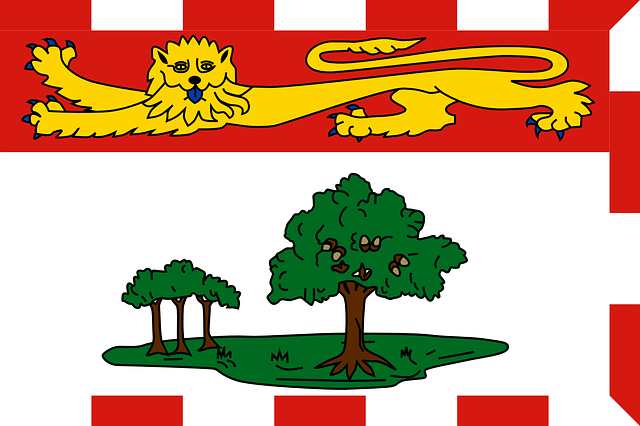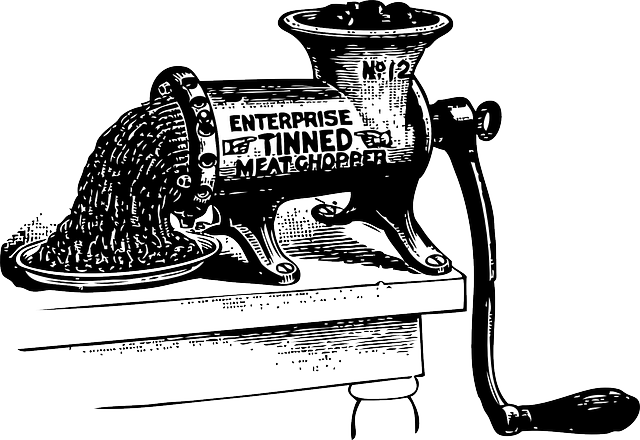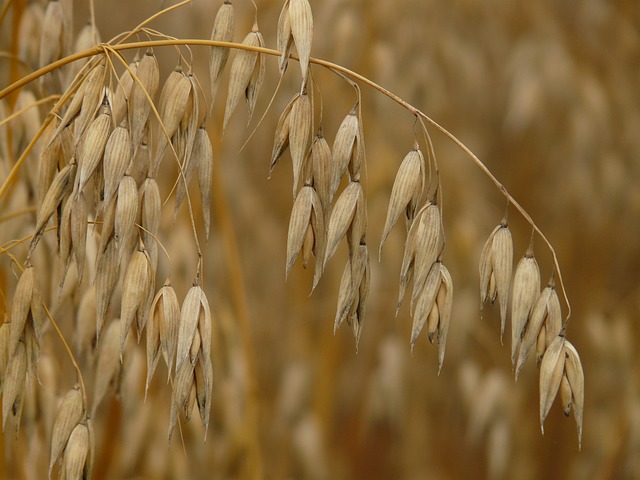إنوما إليش
| جزء من سلسلة منطقات عن |
| أساطير الرافدين |
|---|
| ديانات الرافدين |
|
المخلوقات البدائية
|
|
الآلهة السبعة المقررة
|
|
الآلهة العظام
|
|
أنصاف آلهة وأبطال
|
|
الأرواح والوحوش
|
|
حكايات من بابل
|
| تنطقيد أخرى |
|
Enûma Eliš (المسمارية الأكدية: 𒂊𒉡𒈠𒂊𒇺، وتُخط أيضاً "Enuma Elish")، هي سيرة الخلق البابلية أوإنوما إليش هي سيرة الخلق البابلية. يأتي اسمها إنوما إليش من أول حدثتين فيها. اكتشفها هنري لايارد في 1849 في آثار مخطة أشوربانيبال في نينوى العراق وطبعها جورج سميث في 1867.
تتألف من ألف سطر تقريبا على سبعة ألواح فخارية باللغة البابلية القديمة. في جميع لوح 115 إلى 170 سطرا. النص تام تقريبا عدا اللوح الخامس لكن اكتشفت نسخة عنه في هجريا.
تعتبر ملحمة أنوما إليش أحد أبرز المصادر لفهم نظرة البابليين للعالم وتظهر أهمية مردوخ وخلق البشرية من أجل خدمة الآلهة. لكن هدفها الرئيسي الأصلي ليس دينيا بل لتمجيد إله بابل الرئيسي مردوخ على غيره من آلهة بلاد الرافدين.
هناك عدة نسخ للملحمة في بابل وآشور. تعود نسخة مخطة أشوربانيبال إلى القرن السابع قبل الميلاد لكن السيرة تعود على الأرجح إلى القرن الثامن عشر قبل الميلاد عندما كان مردوخ في أوج مكانته، مع حتى بعض الباحثين يرجحون أنها تعود لما بين القرن الرابع عشر إلى الثاني عشر ق م.
الخلفية والاكتشاف
تحديد عمر الأسطورة
طاقم ألواح الملك تعود، على أقدم تحليل، إلى القرن السابع ق.م.، لكونها من مخطة آشور-بني-پال في نينوى، إلا حتى كـِنگ اقترح حتى الألواح كانت نسخاً من أعمال بابلية أقدم، إذ أنها تمجـِّد مردوخ (من بابل)، وليس إله الآشوريين المفضل، آشور. كما افترض حتى المنحوتات التي عُثِر عليها في معبد نينيب في نمرود تصور مردوخ وهويقاتل تيامات وبذلك تعود بعمر أسطورة التنين على الأقل إلى آشورناصرپال الثاني (883-859 ق.م.)، أي قبل قرنين من تأسيس مخطة آشور-باني-پال. أساطير تيامات ووحوشها تواجدت قبل ذلك بكثير، حتى عهد الحاكم الكاشي آگوم الأول، ~القرن 17 ق.م..
وقد اِقتُرِح حتى الأسطورة، أوعلى الأقل الترويج لمردوخ فيها، تعود إلى صعود الأسرة البابلية الأولى (1894-1595 ق.م.)، أثناء نفس الفترة التي أصبح مردوخ فيها إلهاً وطنياً. وثمة ترويج مشابه لمردوخ في السطور الأولى من شريعة حمورابي (ح.1754 ق.م.).
نـُسـَخ السيرة
تتألف من ألف سطر تقريبا على سبعة ألواح فخارية باللغة البابلية القديمة. في جميع لوح 115 إلى 170 سطرا. النص تام تقريبا عدا اللوح الخامس لكن اكتشفت نسخة عنه في هجريا.
تعتبر ملحمة أنوما إليش أحد أبرز المصادر لفهم نظرة البابليين للعالم وتظهر أهمية مردوخ وخلق البشرية من أجل خدمة الآلهة. لكن هدفها الرئيسي الأصلي ليس دينيا بل لتمجيد إله بابل الرئيسي مردوخ على غيره من آلهة بلاد الرافدين.
هناك عدة نسخ للملحمة في بابل وآشور. تعود نسخة مخطة آشوربانيبال إلى القرن السابع ق.م. لكن السيرة تعود على الأرجح إلى القرن الثامن عشر قبل الميلاد عندما كان مردوخ في أوج مكانته، مع حتى بعض الباحثين يرجحون أنها تعود لما بين القرن الرابع عشر إلى الثاني عشر ق.م.
لم تكن أفكار العراقيين القدماء عن الخلق والتكوين أفكارا بدائية، بل أفكار ناضجة بالدرجة التي تتيحها معارف تلك الفترة من بداية حضارة الإنسان، فلقد أثبت السومريون مقدرة فائقة على الملاحظة الذكية والربط واستخلاص النتائج المنطقية.
النص
The epic itself does not rhyme, and has no meter - it is composed of couplets, usually written on the same line, occasionally forming quatrains. The title Enuma Elish, meaning "when on high", is the incipit.
- The following per tablet summary is based on the translation in Akkadian Myths and Epics (E.A. Spicer), in Ancient Near Eastern Texts Relating to the Old Testament (Pritchard 1969)
اللوح 1
Firm ground below had not been called by name,
Naught but primordial Apsu, their begetter,
(And) Mummu†-Tiamat, she who bore them all, Their waters commingling as a single body;
No reed hut had been matted, no marsh land had appeared,
When no gods whatever had been brought into being,
Uncalled by name, their destinies undetermined—
Then it was that the gods were formed within them.أول ثمانية أسطر من إنوما إليش. Pritchard 1969, pp. 60–1
† هنا قد تكون حدثة "مومـّو" نعتاً، يختلف عن اسم الإله مومـّو
The tale begins before the advent of anything, when only the primordial entities Apsu and Tiamat existed, co-mingled together. No other things or gods are said to exist, nor had any future destinies been foretold .. then from the mixture of Apsu and Tiamat two gods were made - Lahmu and Lahamu; next Anshar and Kishar were created. From Anshar came a firstly the god Anu, and from Anu, came Nudimmud (also known as Ea).
Then these new gods disturbed Tiamat through their motions, and Apsu could not calm them. Further Tiamat found this abhorrent - Apsu called Mummu so that they might speak with Tiamat - he proposed to destroy them, but Tiamat was reticent on destroying what they had made. Mummu adviced Apsu destroy them, and he took it to do so, and embraced Mummu. The new gods heard of this and were worried - Ea however crafted a spell against Apsu's plan, and put Apsu to sleep with it.
Mummu sought to wake Apsu but could not - Ea took Apsu's halo and wore it himself, slew Apsu, and chained Mummu. Apsu became the dwelling place of Ea, together with his wife Damkina. Within the heart of Apsu Ea and Damkina created Marduk. Marduk exceeded Ea and the other gods in his godliness - Ea called him "My son, the Sun!". Anu creates four winds.
Other gods then say to Tiamat - 'when your consort (Apsu) was slain you did nothing', and complain about the wind which disturbs them. Tiamat then proposed to make 'Monsters' and do battle with the other gods. She creates eleven chimeric creatures armed with weapons, and makes the god Kingu chief of the war party, and her new consort too. The 'Tablet of Destinies' is then given to Kingu, making his command unchallengeable.
اللوح 2
Ea heard of Tiamat's plan to fight and avenge Apsu. He speaks to his grandfather Anshar - he tells that many gods have gone to Tiamat's cause, and that she has created eleven monstrous creatures fit for war, and made Kingu their leader, given him the 'Tablet of Destinies'. Anshar is troubled. Eventually Anshar tells Anu so go speak with Tiamat, see if he can calm her, but is too weak to face her and turns back. Anshar becomes more worried, thinking no god can or will stand against Tiamat.
After thinking, Anshar proposes Marduk as their champion. Marduk is brought forth, and asks what god he must fight—to which Anshar replies that it is not a god but the goddess Tiamat. Marduk confidently assures the other gods that he will defeat Tiamat in short order, but presents the condition that he will be proclaimed supreme god—and be given authority over even Anshar—if he succeeds.
اللوح 3
Anshar speaks to Gaga his advisor, tells him to fetch Lahmu and Lahamu - tell them of Tiamat's war plans, of the eleven monsters she has created, and so on, telling also of Marduk's willingness to fight, and his demands for overlordship if he wins. Lahmu and Lahamu and other Igigi (heavenly gods) are distressed by this tale. The gods then drank together, becoming drowsy, whilst agreeing the contract with Marduk.
اللوح 4
Marduk is given a throne, and sits presiding over the other gods - the other gods honor him, agreeing to his overlordship.
"Lord, truly thy decree is first among gods.
Say but to wreck or create; it shall be.
Open thy mouth: the Images will vanish!
Speak again, and the Images shall be whole!"
(Other gods speak to Marduk)
Translation, Table IV. Lines 20-. Pritchard 1969, p. 66
Marduk is given both the throne, as well as sceptre and vestments. He is given weapons, and sent to fight Tiamat - bow, quiver, and mace, plus bolts of lightning, together with the four winds - his body was aflame.
Using the four winds Marduk made a trap so that Tiamat could not escape - he added a whirlwind, a cyclone, and Imhullu ("the Evil Wind") - together the seven winds stirred up Tiamat. In his war chariot drawn by four creatures he advanced. He challenges Tiamat stating she has unrightfully made Kingu her consort, accusing her of being the source of the trouble. Tiamat becomes enraged and single combat begins.
Marduk uses a net, a gift from Anu, to entrap Tiamat; Tiamat attempts to swallow Marduk, but 'the Evil Wind' enters her mouth, preventing this. With the winds swirling within her she becomes distended - Marduk then fires his arrow, hitting her heart - she is slain. The other gods attempt to flee but cannot, and Marduk captures them, breaks their weapons, and are trapped in the net. Her eleven monsters are also captured and chained; whilst Kingu is taken to Uggae (the Angel of Death) - the 'Tablet of Destinies' is taken from Kingu. Marduk then smashes Tiamat's head with the mace, whilst here blood is carried off by the North Wind.
Marduk then splits Tiamat's remains in two - from one half he makes the sky - in it he made places for Anu, Enlil, and Ea.
اللوح 5
Marduk makes likenesses of the gods in the sky, creating constellations, and defines the days of the year from them. He creates night and day, and the moon also. He creates clouds, causes them to rain, and their water to make the Tigris and Euphrates. He gives the 'Tablet of Destinies' to Anu.
Statues of the eleven monsters of Tiamat are made and installed at the gate of Apsu
اللوح 6
Marduk then speaks to Ea - saying he will use his blood to create man - and that man will serve the gods. Ea advises one of the gods be chosen as a sacrifice - the Igigi advice that Kingu be chosen - his blood is then used to create man.
"Construct Babylon, whose building you have requested,
Let its brickwork be fashioned. You shall name it 'The Sanctuary.'"
(Marduk commands the other gods aka the Anunnaki)
Translation, Table VI. Lines 57-. Pritchard 1969, p. 68
Marduk then divides the gods into "above" and "below" - three hundred are placed in the heavens, and six hundred on earth. The gods then propose that they should build a throne or shrine for him - Marduk tells them to construct Babylon. The gods then spend a year making bricks - they build the Esagila (Temple to Marduk) to a great height, making it a place for Marduk, Ea, and Enlil.
A banquet is then held, with fifty of the great gods taking seats. Anu praises Enlil's bow, then Marduk is praised.
The first nine names or titles of Marduk are given.
اللوح 7
The remainder of the Marduk's fifty names or titles are read.
Colophon
Tablets Smith examined also contained attributions on the rear of the tablet - the first tablet contained eight lines of a colophon - Smith's reconstruction and translation of this states :
Palace of Assurbanipal king of nations, king of Assyria
to whom Nebo and Tasmit attentive ears have given :
he sought with diligent eyes the wisdom of the inscribed tablets,
which among the kings who went before me,
none those writings had sought.
The wisdom of Nebo,† the impressions? of the god instructor? all delightful,
on tablets I wrote, I studied, I observed, and
for the inspection of my people within my palace I placed
(Smith 1876, pp. 63–64)
† Nebo was god of literacy, scribes, and wisdom; Tasmit or Tasmetu his wife
التسلسل الأسطوري لعملية خلق العالم
- في البدء كانت الألهة "نمو" ولا أحد معها، وهي المياه الأولى التي انبثق عنها جميع شي.
- أنجبت الألهة "نمو" ولدا وبنتا. الأول "آن" إله السماء المذكر والثانية "كي" إله الأرض المؤنث وكانا ملتصقين مع بعضهما وغير منفصلين عن أمهما "نمو".
- ثم قام "آن" بالزواج من "كي" فأنجبا بكرهما "أنليل" إله الهواء الذي كان بينهما في مساحة ضيقة لا تسمح له بالحركة.
- "إنليل" الإله الشاب النشيط لم يطق ذلك السجن فقام بقوته الخارقة بفصل أبيه "آن" عن أمه "كي"، فحمل الأول فصار "سماء"، وبسط الثانية فصارت أرضا. ومضى يرتع بينهما.
- ولكن "إنليل" كان يعيش في ظلام دامس، فأنجب "إنليل" ابنه "نانا" إله القمر، ليبدد الظلام وينير الأرض.
- "نانا" إله القمر أو"سين", أنجب بعد ذلك "أوتو" أو"شمش" إله الشمس.
وبعد حتى ابعدت السماء عن الأرض، وصدر ضوء القمر الخافت وضوء الشمس الدافئ، قام :إنليل" مع بقية الألهة بخلق مظاهر الحياة الأخرى.
المصادر
- ^ King 1902, p. LXXII.
- ^ King 1902, pp. LXXIII-LXIV.
- ^ Heidel 1951, p. 13.
- ^ Heidel 1951, p. 14.
- ^ Bromily, Geoffrey W. (1988), International Standard Bible Encyclopedia, Grand Rapids, Michigan: William B. Eerdmans Publishing Company, p. 93, ISBN 0-8028-3784-0
- ^ Willis, Roy (2012), World Mythology, New York: Metro Books, p. 62, ISBN 978-1-4351-4173-5
- ^ Heidel 1951, p. 15.
- كلكامش الإنسان والخلود - عبد الحكيم الذنون - صفحة 9-10.
انظر أيضاً
- قائمة آلهة بلاد الرافدين
- ديانات الشرق الأدنى القديم
- أسطورة الخلق السومرية
المصادر
المراجع
- Cory, I.P. (1828), The Ancient Fragments ; containing what remains of the writings of Sanchoniatho, Berossus, Abydenus, Megasthenes, and Manetho, https://archive.org/stream/ancientfragments00coryuoft#page/n5/mode/2up
- Cory, I.P. (1876), Richmond Hodges, E., ed., Cory's Ancient Fragments of the Phoenician, Carthaginian, Babylonian, Egyptian and other authors, https://archive.org/details/corysancientfrag00coryuoft
- Smith, George (1876), The Chaldean account of Genesis, https://archive.org/details/chaldeanaccounto00smit
- Jensen, Peter (1890) (in german), Die Kosmologie der Babylonier, https://archive.org/details/diekosmologieder00jensuoft
- Gunkel, Herman; Zimmern, Heinrich (1895) (in german), Schöpfung und Chaos in Urzeit und Endzeit : eine religionsgeschichtliche Untersuchung über Gen 1 und Ap Joh 12, https://archive.org/details/schpfungundcha00gunk , alt link
- Jensen, Peter (1900) (in german), Assyrisch-babylonische Mythen und Epen, https://archive.org/details/assyrischbabylo00jensgoog
- British Museum (1901), Cuneiform texts from Babylonian tablets, &c. in the British Museum, Part XIII, http://www.etana.org/node/729
-
King, L. W. (1902), The Seven Tablets of Creation
- English Translations, etc, 1, http://www.etana.org/node/646
- Supplementary Texts, 2, http://www.etana.org/node/599
- Budge, Wallis E.A. (1921), The Babylonian Legends of the Creation and the Fight between Bel and the Dragon, British Museum, https://archive.org/details/WallisBudgeEATheBabylonianLegendsOfTheCreation1921 , alt link
- Luckenbill, D. D. (Oct 1921), "The Ashur Version of the Seven Tablets of Creation", The American Journal of Semitic Languages and Literatures 38 (1): 12–35, https://archive.org/details/jstor-528577
- Heidel, Alexander (1951) [1942], The Babylonian Genesis (2nd ed.), University of Chicago Press, ISBN 0 226 32399 4, https://oi.uchicago.edu/sites/oi.uchicago.edu/files/uploads/shared/docs/misc_genesis.pdf
- Pritchard, James B., ed. (1969), Ancient Near Eastern Texts relating to the Old Testament (3rd ed.), Princeton University Press, ISBN 0 691 03503 2, https://archive.org/details/Pritchard1950ANET_20160815
- Mayer Burstein, Stanley (1978), The babyloniaca of berossus, 1, ISBN 0890030030
- Sommer, Benjamin D. (2000), "The Babylonian Akitu Festival: Rectifying the King or Renewing the Cosmos?", Journal of the Ancient Near Eastern Society (JANES) 27 (1): 81–85; p.82, note 7; p.90; p.91, note 49, https://janes.scholasticahq.com/article/2432-the-babylonian-akitu-festival-rectifying-the-king-or-renewing-the-cosmos
قراءات إضافية
- Deimel, Anton (1936), Enûma Eliš
- Landsberger, B.; Kinnier Wilson, J. V. (1961), "The Fifth Tablet of Enuma Eliš", Journal of Near Eastern Studies 20 (3)
- Lambert, Wilfred G.; Parker, Simon B. (1966), Enûma Eliš. The Babylonian Epic of Creation, Oxford
- Vanstiphout, H. L. J. (1981), "Enūma eliš: Tablet V Lines 15-22", Journal of Cuneiform Studies 33 (3/4), doi:
- Al-Rawi, F. N. H.; Black, J. A. (1994), "A New Manuscript of Enūma Eliš, Tablet VI", Journal of Cuneiform Studies 46, doi:
- Talon, Philippe (2005), The Standard Babylonian Creation Myth Enūma Eliš, 4, ISBN 952-10-1328-1
- Kammerer, Thomas. R.; Metzler, Kai. A. (2012) (in german), Das babylonische Weltschöpfungsepos Enûma elîsch, Ugarit-Verlag, Münster, ISBN 978-3-86835-036-4
- Lambert, Wilfred G. (2013), Babylonian Creation Myths, ISBN 978-1575062471
وصلات خارجية
- - The Babylonian Epic of Creation on Ancient History Encyclopedia (includes the original text)
- "Mesopotamian Creation Stories", Imagining Creation, IJS Studies in Judaica, 5, Brill Academic Publishers, 2007, ISBN 978-90-47-42297-6 , extract of English translation by W.G. Lambert reproduced at
- A cuneiform text of Tablet I with translation and explanation in detail
















